Our Science/ Seba Technology Disruption Framework/ In-Depth
SDTF: In-Depth
Towards a Practical Theory of Technology Disruption
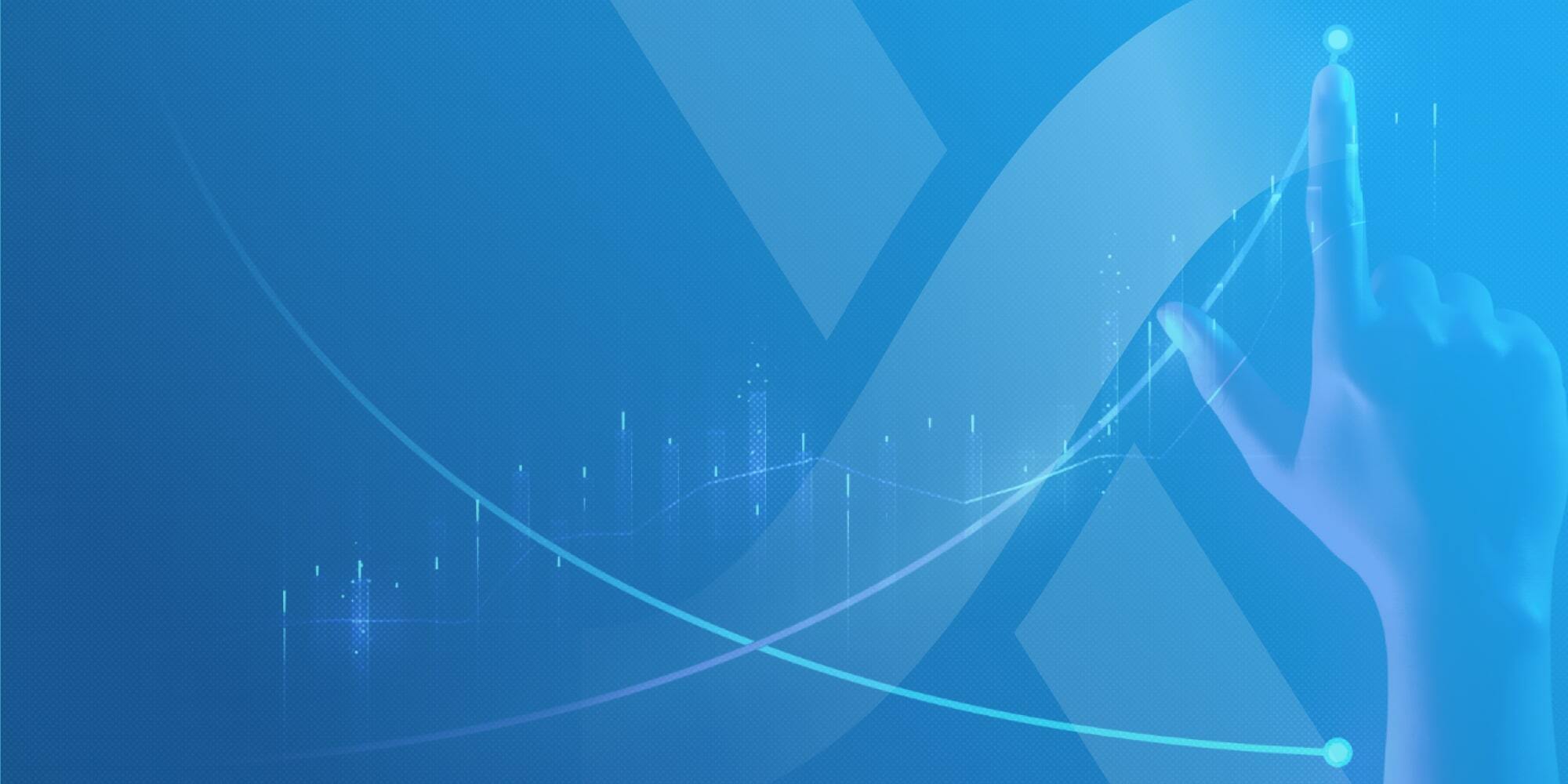
Defining Technology Disruptions
A technology disruption is a circumstance in which a new product or service offers a competitive value proposition that significantly weakens, transforms, or destroys one or more existing products, market categories, industries, or sectors as a result.
Disruptions occur when improvements in cost or in capabilities of technology enable a new product to outcompete incumbent offerings.
Disruption signifies change that is swift and substantial, not slow and incremental.
Improvements in Cost and Capability
The combination of cost and capability
defines the value proposition offered by any given product.
For any given technology this takes the form of cost-per-unit, like cost-per-kilowatt-hour for energy; cost-per-vehicle-mile-traveled for transportation; cost-per-kilogram-protein for food; and cost-per-megabyte-memory for information storage.
Cost-capability improvement tends to closely correspond to a product’s underlying experience curve, as it too tends to improve over time in relation to cumulative production volume.
It is probable that cost-capability, like the “experience” in experience curves, is the result of many factors including increased investments, ongoing incremental research and development, manufacturing scale, openness, competition, standardization, and ecosystem integration, among others – all of which together may be said to comprise “learning” from “experience."

Technology Convergence
Most disruptions are a product of “convergence” - the substantial ongoing improvement of multiple converging technologies.
Enabling technologies form part of the background enabling conditions for a disruption along with necessary social, cultural, geopolitical, economic, and environmental circumstances, whereas converging technologies each have a cost curve, experience curve and adoption curve that must be tracked and projected forward.
Some of the converging technologies of the present inevitably become the enabling technologies of the future.
S-Curves
We have documented over 1,000 disruptions and more than 100 adoption S-curves for products of all kinds throughout human history.
When measured in terms of market share,
an adoption S-curve for the disruptive new technology means that the older technologies lose market share accordingly, and thus trace an inverted S-curve of abandonment. Visualized together, these two S-curves form a disruption X-curve.
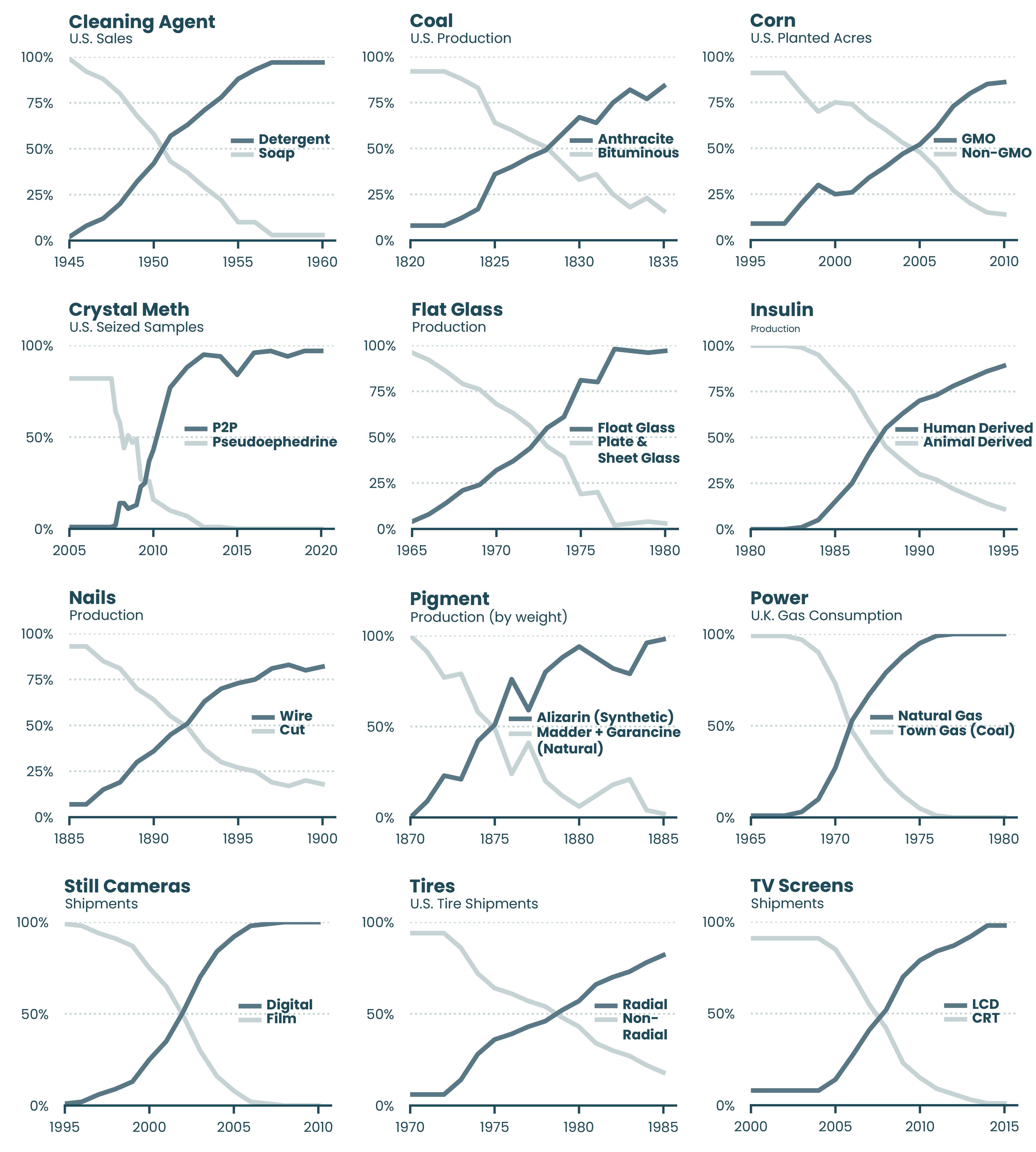
Product Innovation
Technological advancements allow firms to offer novel products that create value and solve customer problems in new ways.
Technological advancements allow firms to offer novel products that create value and solve customer problems in new ways.
Innovative new products can grow existing markets by better meeting existing consumer demand, and they can also create entirely new markets by tapping into unmet needs that earlier technologies weren't able to address.
Electricity enabled entirely new kinds of lighting products that were vastly brighter and safer than open flames.
Business Model Innovation
Business model innovation allows firms to utilize new technologies and/or new products to create value and solve customer problems in new ways.
Uber leveraged the technology convergence around smartphones and the Internet to offer a new way to match consumer demand for transportation with independent peers driving their own personal vehicles as suppliers to outcompete the incumbent taxi industry, and create whole new markets as well.
Typology of Disruption
We describe disruption types in two ways
Initial Conditions
Disruption from Below
A ‘disruption from below’ occurs when one or
more technological innovations give rise to a new product that is initially lower cost but also lower quality than mainstream products.
Disruption from Above
A ‘disruption from above’ occurs when a
product is initially higher cost but also more capable than the incumbent offerings.
LED Lighting X Incandescent Lighiting
EVs X ICEs
iPhone X Flip Phones
Big Bang Disruption
A ‘Big Bang disruption’ occurs when a new product is better, faster, and cheaper than existing conventional products on the day it is launched.
GPS Navigation Apps X GPS Devices
Printed Book X Manuscript
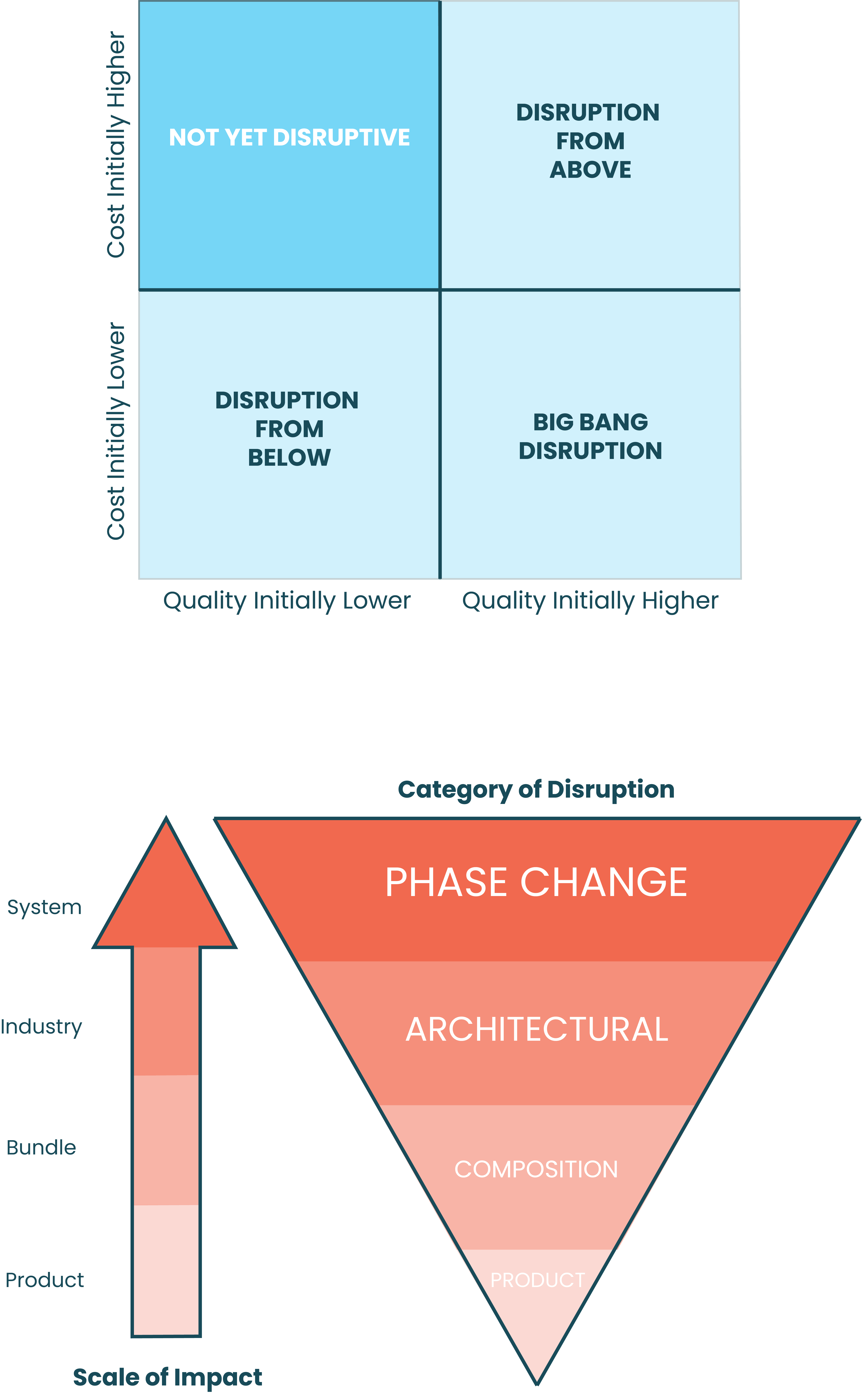
Scale of Impact
Disruptions are not all equally impactful. Some have implications only for their specific market niche, while others may upend their entire sector and transform the human condition at large.
Product Disruption
A ‘product disruption’ occurs at the individual market scale, and is when new technology enables a new product that directly outcompetes other products in its market niche.
Product disruptions happen when a new product possesses dramatically greater cost capability and thus offers a far superior value proposition that supports entirely new use cases.
LED lightbulbs are a product disruption from above
Composition Disruption
A ‘composition disruption’ occurs at
the ‘bundle’ scale and is when the change in demand for the specific product that is being outcompeted by a new technology has knock on impacts that affect other products in other markets as well.
Kerosene was a composition disruption of whaling, and not just of whale oil alone as it also had knock-on effects on whale bone and other whaling industry products. This is because whale oil was only one of several products obtained as a ‘bundle’ from whales.
Architectural Disruption
An ‘architectural disruption’ occurs at
the industry scale and is when a new product radically changes the way products and services are produced, managed, delivered, and sold.
Home computer printers disrupted more than just typewriters and typists, they disrupted the entire printing industry as well.
Phase Change Disruption
A ‘phase change disruption’ occurs at the sector scale and is when a new product leads to a new system with new often radically different properties and behaviors.
Automobiles transformed the entire transportation sector. Dozens of new industries emerged, from rubber and metals to fast food and motels; new infrastructure arose in the form of filling stations, paved roads, parking lots, and traffic signals; urban and rural land use changed as cities reorganized and suburbs appeared.
Dynamics of Disruption
Causal feedback loops are the core forces that drive disruption, and are fundamentally economic in nature.
Multiple reinforcing feedback loops amplify one another such that more demand for the new technology and products based on it begets more supply, and vice versa.
Simultaneously, balancing feedback loops also amplify one another such that less demand for the old technology and products based on it begets less supply, and vice versa.
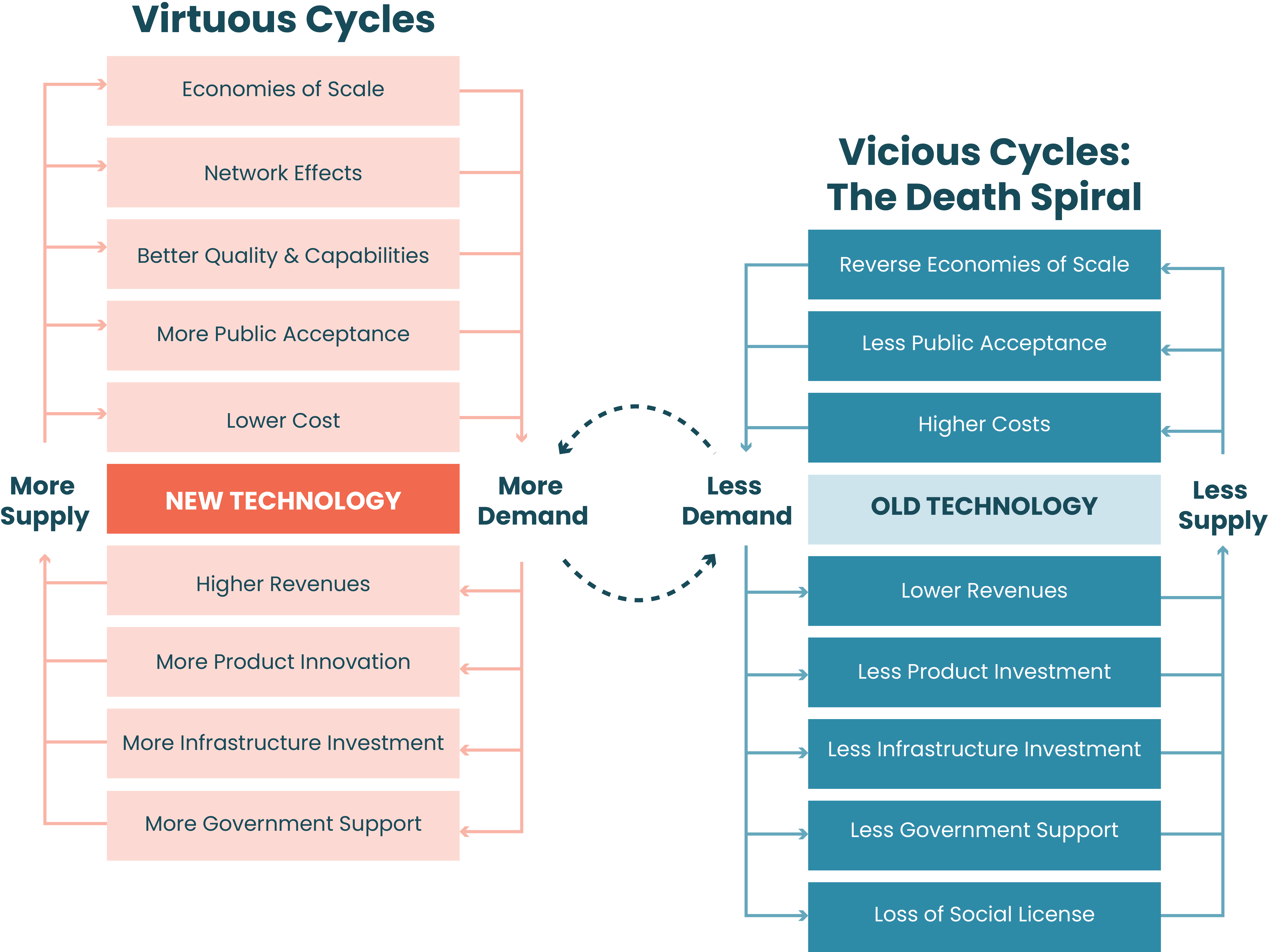











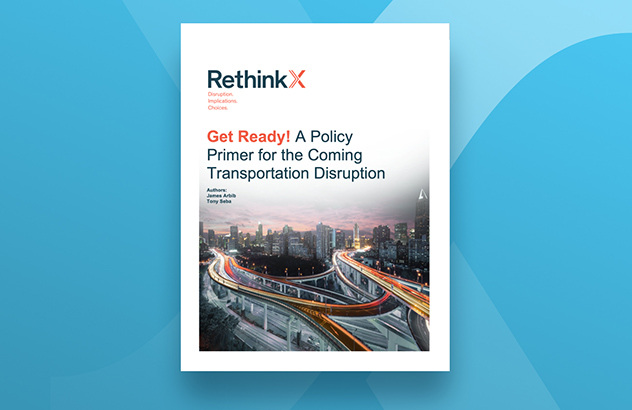




.png?width=732&name=Untitled%20design%20(13).png)



.png?width=732&name=Copy%20of%20Website%20imagery%20-%20Featured%20Image%201200x628%20(9).png)
-min-1.png?width=732&name=Copy%20of%20Website%20imagery%20-%20Featured%20Image%201200x628%20(6)-min-1.png)